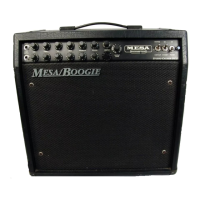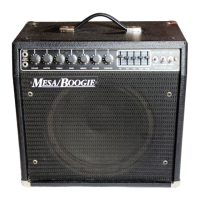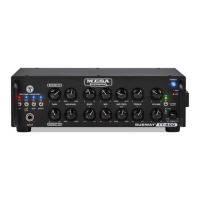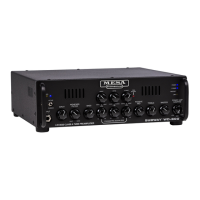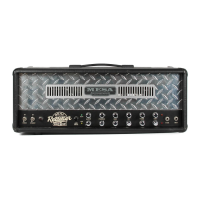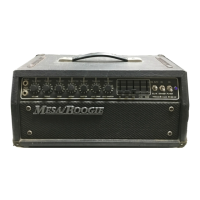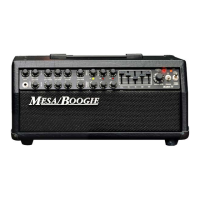PAGE 12
REAR PANEL: Controls & Features (Continued)
SLAVE: (Continued)
gives you separate control over the wet sound in a parallel world. This separate treatment of the processed
sound mimics having separate channels of processing on playback in a recording console and is the ultimate way to make sure there
are no compromises in your live tone.
NOTE: While you can use almost anything as additional slave amplifiers, may we humbly suggest that using another
ACE for mono
enhancement or, one of our dedicated rack mount all-tube stereo power amplifiers for stereo rigs - will preserve and in fact enhance
the original ACE dry signal. (Call us and ask to speak with a Product Specialist who can advise you as to which stereo model would
best suit your needs). We have designed these stand alone power amplifiers to deliver ultimate Tone, might and portability and when
combined with your ACE, they will create a dream rig of mind-bending performance.
These are the Speaker Outputs for connecting your cabinet(s) of choice. Your ACE is not very sensitive to imped-
ance mismatching and therefore we encourage experimentation with regards to speaker loads. You may feel free to try an 8 Ohm
load on the 4 Ohm jack or a 16 Ohm load on the 8 Ohm jack as you may discover a characteristic that the mismatched load imparts
on the sound that is desirable.
MESA 4x12 cabinets are wired in Series/Parallel and are rated at 8 Ohms and these should
normally be connected to the 8 Ohm jack. When using two
MESA 8 Ohm 4x12 cabinets, con-
nect them each to a 4 Ohm jack as doubling the load on each jack produces a total load of 8
Ohms and is a proper impedance match.
Feel free to use speaker cabinets built by other manufacturers (at least until such time you can
check out a
MESA cabinet) and these are often wired to produce a 16 Ohm load which you
would want to connect to the 8 Ohm jack. Two 16 Ohm cabinets would be connected each to
an 8 Ohm jack. Overall your
ACE is very impedance friendly and most speaker loads will work great with the exception of slightly
shorter power tube life occurring when a mismatch in the low direction (two 4 Ohm cabs - each in a 4 Ohm jack to produce a total
load of 2 Ohms) is used for long periods of time.
These jacks provide an external trigger port for the Channel Select and SOLO
functions. They may be connected to an external master controller (usually MIDI programmable) so that one command can control
all footswitchable functions on your
ACE, along with any midi program change commands sent to your outboard processors. This
is a great feature that will allow you to avoid the dreaded pedal board dance.
The EXTERNAL SWITCH jacks respond to latching type logic where the “tip” is shorted to the “ring” or ground.
This is also referred to as tip-to-ground logic and is the most common type of switching logic used in tube
musical instrument amplifiers. Simply connect a standard unshielded 1/4” cable to the
ACE EXTERNAL
SWITCH jacks and connect these to a latching tip-to-ground port on the master switching device. Refer to the
master switcher’s manual as to how to control and store the function jacks under a program.
Your ACE is fitted with a Series Effects Loop for interfacing outboard processing. The Loop is placed at the junction
between the preamp and the power amp and is optimized for levels that will match up with most good quality processing devices.
A SEND LEVEL Control is provided to fine tune the signal strength coming from the preamp and allows for some compensation for
extreme Channel MASTER settings. As mentioned earlier, the Front Panel OUTPUT (and SOLO) Control is part of the Effects Loop
Return stage and therefore these are not active when the Loop is switched out of the circuit.
As you have probably noticed, the Loop may be switched out of the signal path completely using the LOOP IN/HARD BYPASS switch
CHANNEL SOLO
EXT
SW
ST I LE TTO
AC
E
®
CHANNEL & SOLO: External Switch Ports
4 OHM 4 OHM 8 OHM
8 OHM
SPEAKER

